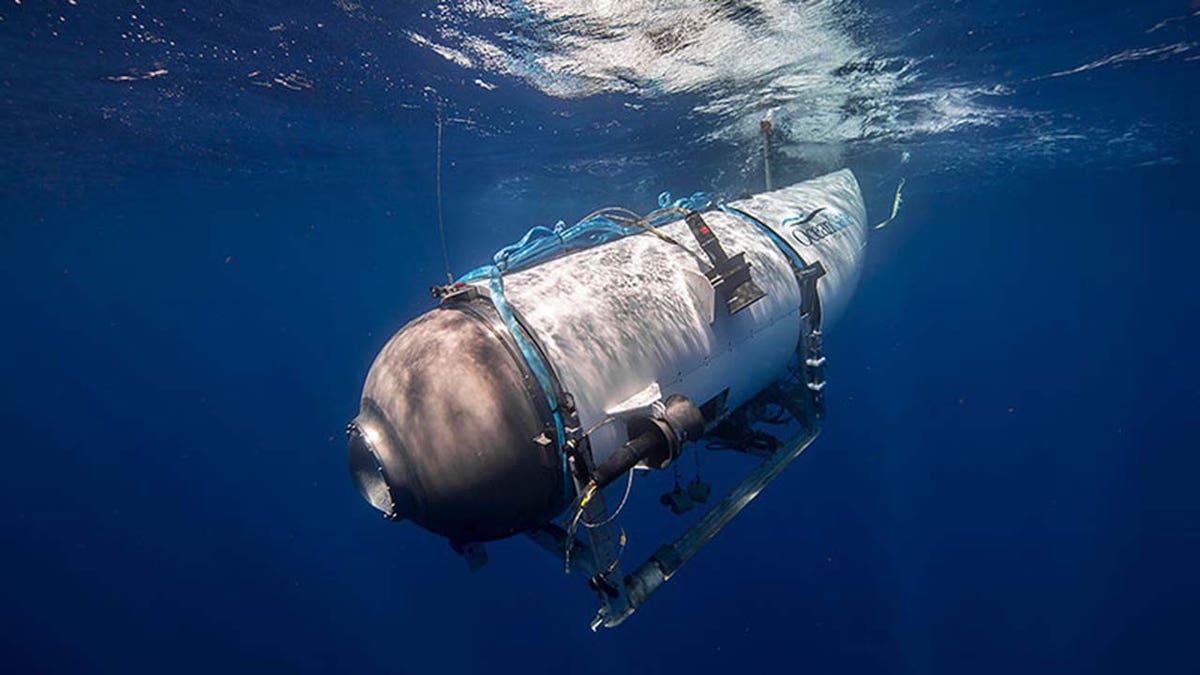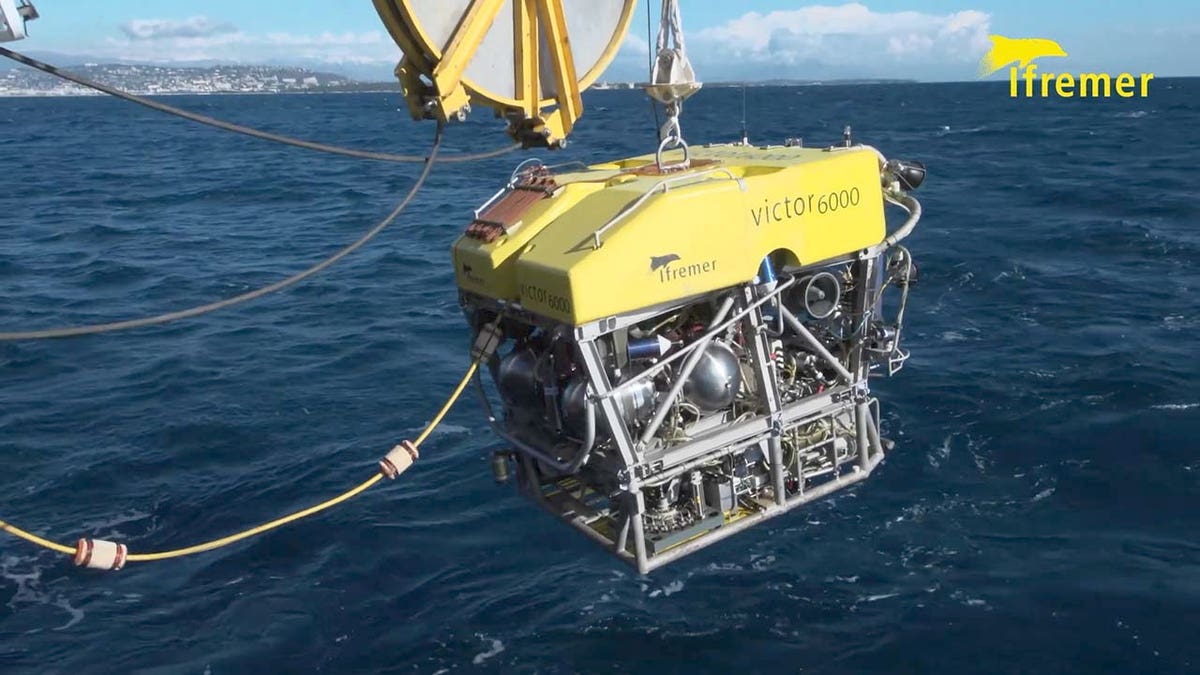Debris found in submarine search area, connection to the Titan unconfirmed
Fox News senior correspondent Mike Tobin reports on the Coast Guard’s post that a debris field was found in the missing submersible search area near the Titanic wreckage.
BOSTON – A remotely operated vehicle found a "debris field" in the days-long search for five ocean explorers missing aboard the OceanGate Titan submersible, a deep-sea vehicle that vanished Sunday in an attempt to dive to the wreck of the Titanic, the U.S. Coast Guard said Thursday morning.
"Experts within the unified command are evaluating the information," the Coast Guard announced on Twitter.
Additional details were not immediately available, but authorities were expected to give an update soon.
The Explorers Club told its members Thursday that a "debris field" found during a search of the missing Titanic tourist submersible "may be the landing frame and a rear cover of the tail instrument compartment" of the vessel lost on previous dives.

Inset, from left: Suleman Dawood, Shahzada Dawood, Stockton Rush, Paul-Henri Nargeolet and Hamish Harding. Background: An image of the OceanGate Titan submersible. (Engro Corp. | Reuters/Shannon Stapleton | @OceanGateExped/Twitter | Felix Kunze/Blue Origin via AP | Ocean Gate/Handout/Anadolu Agency via Getty Images)
"We hear there may be additional debris, but no updated visuals of the submersible," Richard Garriott wrote in an email to Explorers Club members. "We will all be watching the Coast Guard press conference for official news of the rescue. We are not the source for search and rescue. Any official updates should come from the Coast Guard."
The U.S. Coast Guard was expected to give a 3 p.m. press conference to provide an update on the search for the missing submersible.
The Explorers Club is an international society of adventurers that included Hamish Harding, a U.K. aviator and millionaire who was one of five passengers on board the submersible that went missing Sunday.
The Titan lost contact with its surface vessel, the Polar Prince, around one hour and 45 minutes into its dive Sunday morning, about 900 miles east of Cape Cod, Massachusetts, and around 400 miles southeast of St. John's, in Canada's Newfoundland.
‘BANGING’ NOISES CONFIRMED IN DESPERATE DEEP-SEA SEARCH FOR MISSING TITAN SUB BUT SOURCE UNKNOWN

This file image provided by OceanGate shows the Titan submersible descending into the ocean. (OceanGate Expeditions)
Harding was one of the passengers inside the sealed vehicle, along with OceanGate CEO Stockton Rush; father-and-son Shahzada and Suleman Dawood, who are members of one of Pakistan’s wealthiest families; and Paul-Henri Nargeolet, a former French navy officer and leading Titanic expert.
The U.S. Coast Guard headed a unified command that involved commercial assets, research vehicles and military counterparts from Canada, France and the U.K.
Search-and-rescue crews spent the week deploying high-tech buoys, robotic vehicles known as ROVs, surface vessels and aerial searches in an effort to pinpoint the missing sub's location.
On Tuesday and Wednesday, Canadian pilots picked up repeated sounds during their search.

The Victor 6000, an unmanned French robot that can dive up to 6,000 meters, is being used in the search. It has arms that can be remotely controlled to cut cables or otherwise help release a stuck vessel, but it doesn't have the capability of lifting the submersible on its own. (Ifremer handout via Eyepress)
Carl Hartsfield, a retired Navy captain and a scientist from the Woods Hole Oceanographic Institution, said during a USCG briefing that the noises had been "described as banging."
CLICK HERE TO GET THE FOX NEWS APP
Authorities did not elaborate and had not discovered their source on Wednesday.
This is a breaking news story. Check back with Fox News Digital for updates.






















